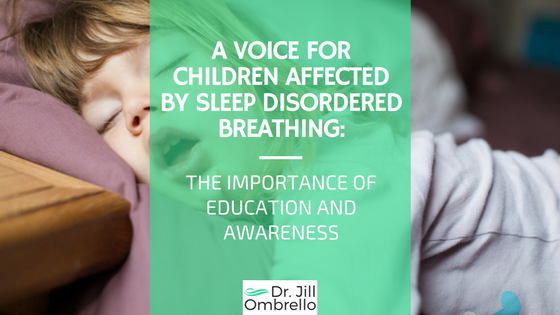Have you ever experienced a health condition that made breathing a burden? Imagine that before a run, you are forced to place a straw in your mouth, lessening your breathing capacity by over 50 percent. That would be fairly difficult, no? (You don’t have to answer that – that was just one of those fancy rhetorical questions to get you thinking.)
Here’s another one: Do you find it shocking that millions of children worldwide are walking around each and every day with this suboptimal breathing condition and their parents have no idea?
Now go one step further, imagine that you have difficulty breathing while you sleep, so much so that your own body would jolt itself awake a few times every hour as your body gasps for air in an attempt to fill your lungs. Even if you would wake up not remembering these forceful fits of breathing throughout the night, your body will still feel its effects: complete exhaustion, irritability, aggression, anxiety, etc.
This could be happening to your child as they sleep. There is a silent epidemic that affects 9 out of every 10 children that causes this to happen and, oftentimes, the signs and symptoms associated with this condition are ignored, disregarded as being “just a phase,” or misdiagnosed as a different disorder.
This epidemic, known as sleep disordered breathing, causes a great deal of discomfort and unhealthy symptoms for these children. Research has shown that the chronic suffering of these symptoms can also lead to comorbidity diagnoses such as behavioral issues, ADD/ADHD, depression, and allergies.
Despite its prominence in younger children, many parents have never heard of sleep disordered breathing, nor are they cognizant of its side effects, which can easily be mistaken for common developmental problems in children. I talk about this condition with such urgency not because I’m an alarmist, but, instead, because I feel I have a duty to educate parents and help these children. I’m very enthusiastic about partnering with many of these families who have been running in circles trying to get opinions and treatment that don’t even address the root cause of their children’s issues. And I know that for each day that goes by for these kids, their condition worsens, their potential growth and development is diminished, and the window of time narrows to treat them conservatively.
This is why I have dedicated a significant amount of my time to raising awareness for sleep disordered breathing, lecturing to healthcare providers and parents around the world about this complex condition and the many ways we can treat it. As a wife, mother, and owner of a family dental practice, it can be difficult to leave my family and business in order to educate other doctors, providers, and families about conservative, comprehensive therapy options out there, but it needs to be done. I choose to sacrifice this quality time at home and in my business because I am passionate about using my knowledge and experience to help as many children as I can.
I share this information only because I know my fellow moms out there know what it means to make decisions or participate in activities that take you from your family. It’s a really big decision and not one I make lightly. It’s with the gravity of my decisions that I hope I can relay to other parents just how incredibly important I think this is.
I strive to educate doctors to identify and treat these symptoms at an early age, before much of a child’s growth and develop is compromised and while the condition is the easiest to treat. I’m also majorly compelled to empower parents to seek out the appropriate experts and get a full evaluation for each of their children. The best case scenario is that your child is in perfect health! The next best case scenario is that a young child (2-4 years old) comes in showing the early signs of this condition and we are able to catch sleep disordered breathing early! This means that we can get everything back on track for ideal development as straightforward and quickly as possible.
My harder conversations come when a child or teen come in. Because they are near the later stages and have already undergone the majority of their growth and development (i.e. right before, during, or anytime after puberty) and their condition is more severe, we have to use more invasive and aggressive treatment to fix their oral and airway issues. Even worse, these kids have typically been on medications they didn’t even need – or they’ve experienced behavioral issues or difficulty in school – all because this evaluation had never been performed and the condition was not caught in early development. These children or teens still receive my help, but I just wish I could have gotten to them earlier. The research is there. Sleep disordered breathing is a huge, avoidable problem, but parents have to bring their kids in to see me as early as possible!
I am more than happy to continue this conversation for any parent, grandparent, aunt, uncle, or neighbor interested in learning more about sleep disordered breathing. If you are in the Dallas-Fort Worth area, call my office to make an appointment and come in for a free consultation. If you’re not in my area but you’d still like some additional information, contact my team and I today with your questions! Since I teach a lot of the doctors across the nation specializing in this therapy, I’m happy to refer you to an expert in your area.

